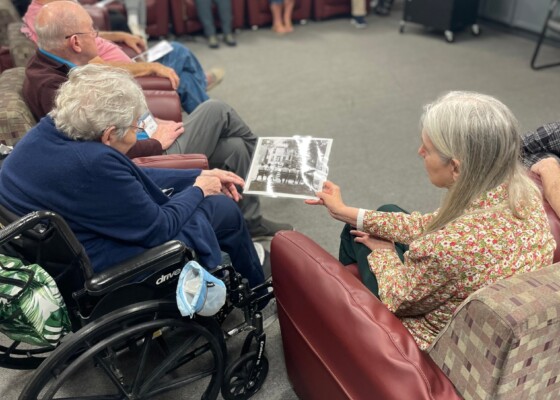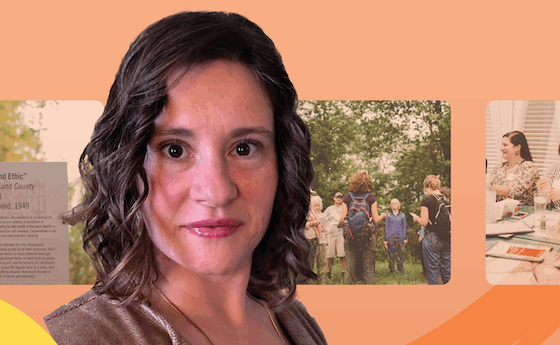Refuge
May 4, 2020I’m not an outdoors person. I hate camping, get poison ivy if I walk near anything that looks like a vine, am allergic to all pollen, and am easily spooked…
I’m not an outdoors person. I hate camping, get poison ivy if I walk near anything that looks like a vine, am allergic to all pollen, and am easily spooked by the way dragonflies and large bees seem to hover around your face when you walk near wildflowers. I like my landscape flat, my walking surfaces paved, and fresh air best when it’s filtered through a front door screen.
On the other hand, we chose our house because it has a lot of windows and is in a neighborhood of mature trees. There are so many trees and shrubs that at some times of the year you can hardly see the house from the street. It’s too much probably, but the view from inside the house is comforting to me. Our windows look out on, among other things, an ancient linden in the front yard, and a Japanese maple whose leaves are at this time of year an almost transparent red: more burgundy in the evening and crimson in the morning sunlight. I know this because every morning for two weeks I’ve watched the leaves unfurl. Because of the pandemic, I’m in my house a lot more and have had more time to notice things like this. The color of the light is also changing with the seasons; at least it seems that way. The light right now is all the shades of green: particularly emerald, lime, and jade.
In our back yard the crab apple trees are blooming pink, as are the dogwoods and azaleas and the fading rhododendrons. The maple trees and the oaks are leafing out, the leaves tightly curled and a kind of mustard color. The buckeye leaves, first to arrive and first to fall, have already sprouted the pods that will protect the tree’s mahogany nut-like seeds. And soon the lilacs will be in bloom, and for a week or so the whole house will smell like flowers.
Because of the pandemic, there have been fewer cars in the neighborhood and more sightings of coyote, red fox, and deer. I can’t tell you how much I hate that the cars will be back soon. Last week the night was so clear that the quarter moon’s crescent and its partner, Venus, shone like sharp white cut-outs in the clear, unpolluted sky. And some mornings have been so quiet that the only sounds have been songbirds, an occasional barking dog, and the cackle of the cooper hawks who fly from their nests near the river, looking for prey.
The smaller birds shriek and then get quiet as the hawks glide and then after the hawk has had its fill, they begin their song again. The small birds are looking for mates. Or just chatting, who knows. It’s all so pretty and so loud, as though they think they belong here. But later in the day I’ll find an explosion of feathers and fluff along the street, a reminder of the carnage. And still, the birds keep singing.
My favorite books are deeply informed by the natural world, and my favorite passages in those books are descriptions of landscape and even of the weather. Nothing I like better than a good weather report in a book—a snowstorm, a hot day filled with the scent of boiled shrimp. I love the blue mesas, the reds and lavenders of the New Mexico sunsets in Cather’s The Professor’s House; the image of the plow against the red setting sun in My Antonia; the frozen fields in Chekhov and Pasternak; the clean, sub-zero air of the Alps in Magic Mountain.
Many of the natural images I remember most from these books are seen through the window of a house or train or wagon—something that encloses, a bit of refuge, a rest, from the world of predator and prey. I wish I didn’t need my nature tamed, seen through a window, but I seem to. And I do need it, to feel my place in the natural world. Perhaps all living things need that—the nest, the den, the place of safety and comfort from which to view the wildness, a place to calm our fears, protect our loved ones, to keep the dangers at bay. An illusion of control.
In case you’re wondering, I live in an old ring suburb, inside the beltway of Indianapolis, a mile away from the city’s largest malls. The suburbs aren’t particularly hip, neither urban nor rural, and they owe their continued existence to the cars I’ve learned to hate.
Outside the city center, Indy is a city of suburbs. I’ve always thought it interesting that Thoreau’s Walden Pond was a mile outside the town of Concord, that Annie Dillard’s The Pilgrim at Tinker Creek, was written and observed from a suburb of Roanoke, Virginia. When Dillard comes face to face with that weasel in her often-anthologized essay “Living Like Weasels,” it’s like the red fox you might see in your own back yard—close enough to the city to be in danger, curious or lost enough to not care, close enough to a river or field to find refuge. Trusting. I want to live, the fox says, as does the songbird, and the hawk, as do you and me, and the planet says it too, and the universe, and so on, forever.
***
Susan Neville is the author of six works of creative nonfiction: Indiana Winter; Fabrication: Essays on Making Things and Making Meaning; Twilight in Arcadia; Iconography: A Writer’s Meditation; Light, and Sailing the Inland Sea. Her collections of short fiction include The Town of Whispering Dolls, winner of the Doctorow Prize for Innovative Fiction; In the House of Blue Lights, winner of the Richard Sullivan prize; and Invention of Flight, winner of the Flannery O’Connor Award for Short Fiction. Her stories have appeared in the Pushcart Prize anthology and in anthologies including Extreme Fiction (Longman) and The Story Behind the Story (Norton.) Her story “Here” won the 2015 McGinnis-Ritchie Award from the Southwest Review, and recent stories and essays have appeared or will appear in Ploughshares, Image, North American Review, The Collagist, The Missouri Review, Diagram, and other magazines. She teaches creative writing, a seminar in Willa Cather, and courses in Butler’s First Year Seminar program.


